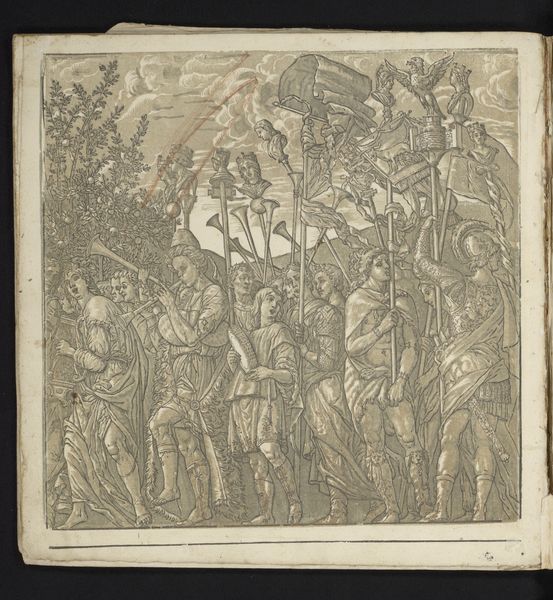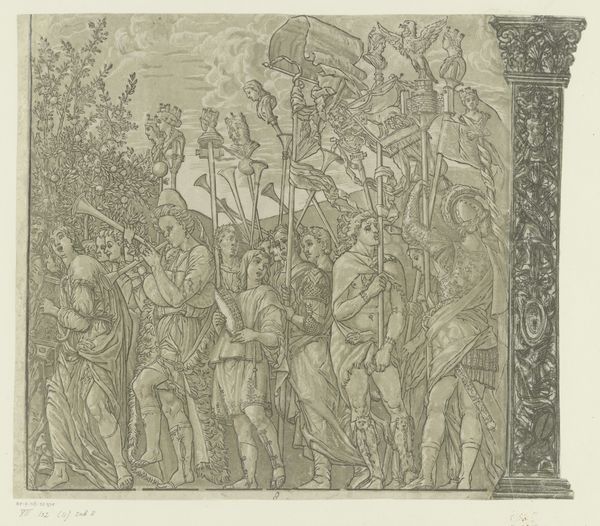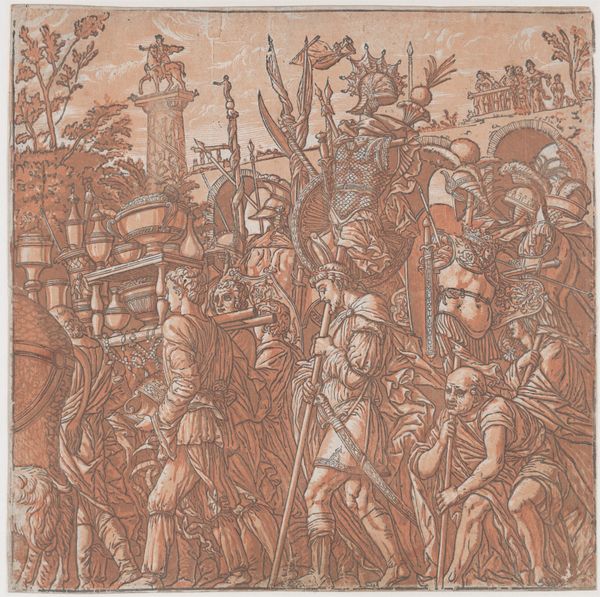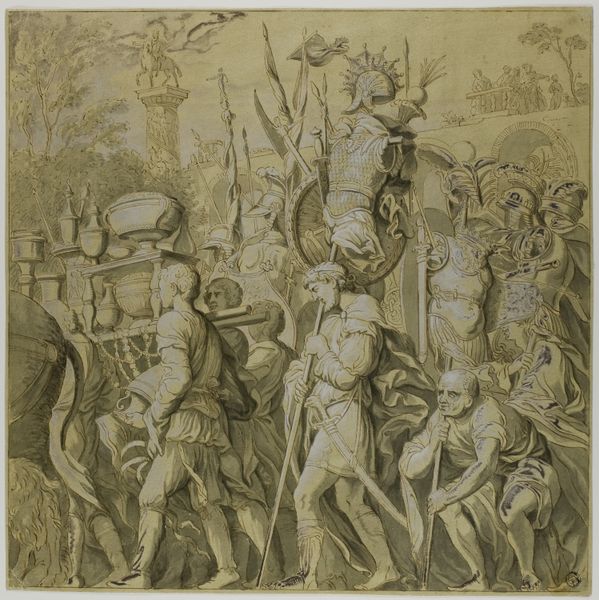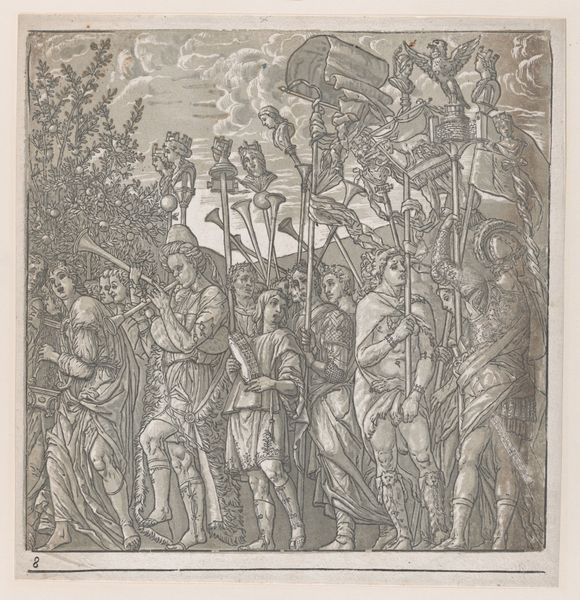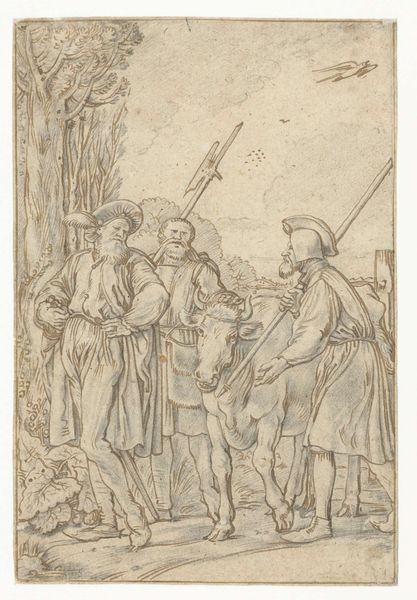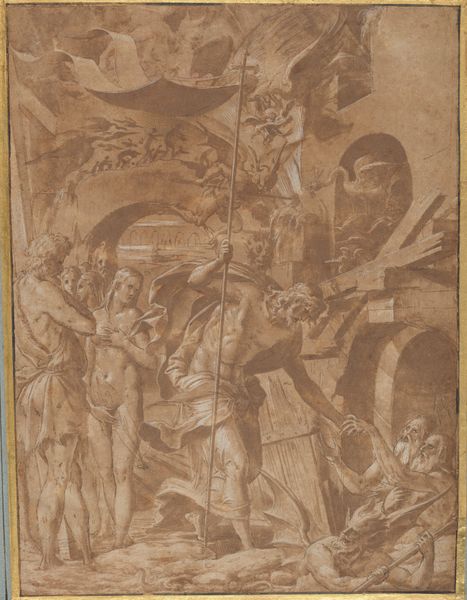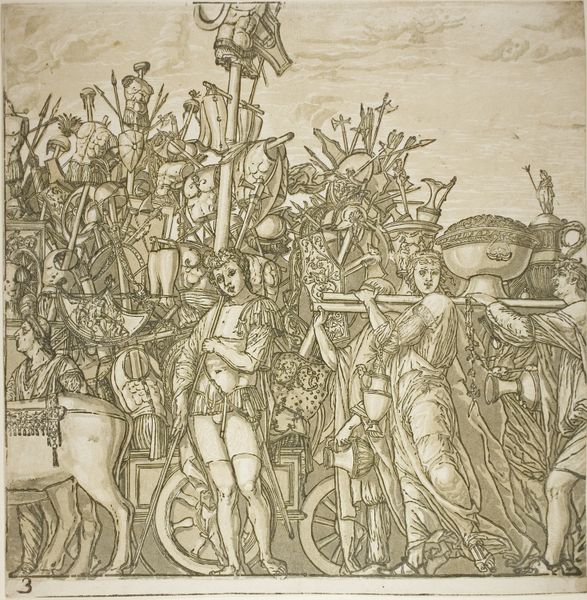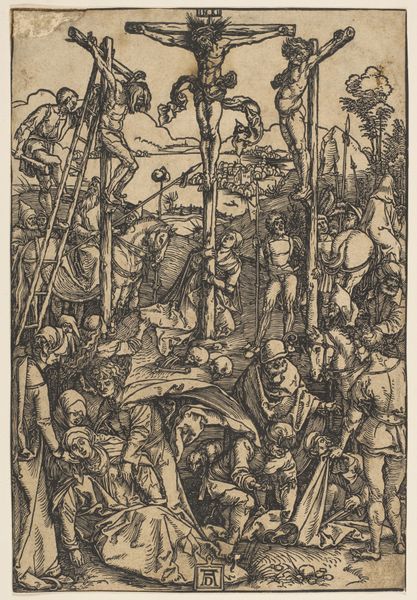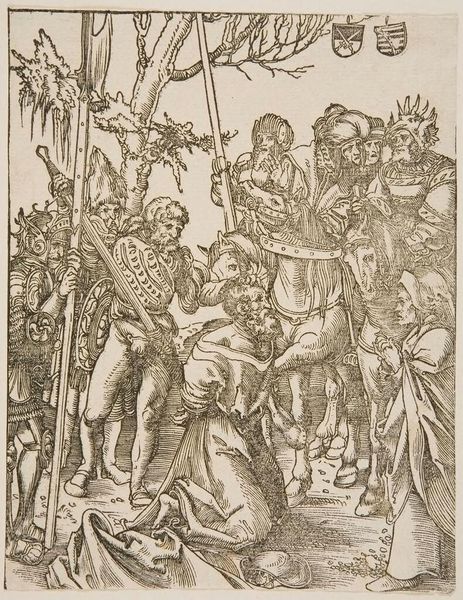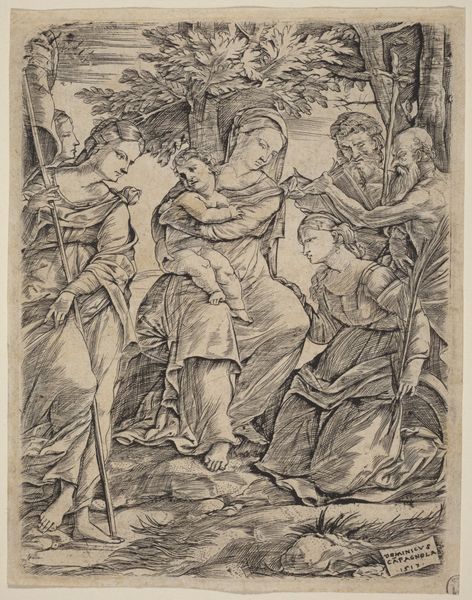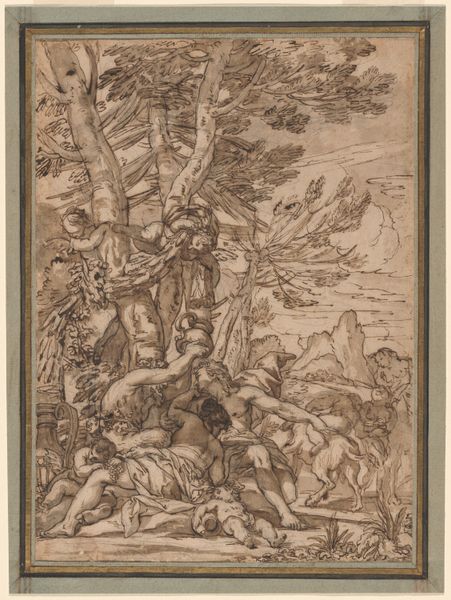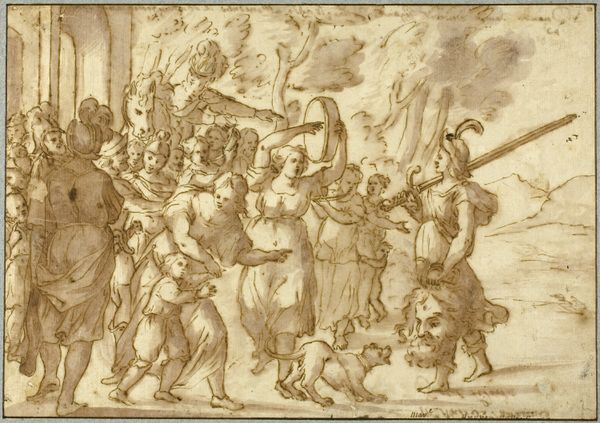
drawing, print, etching, paper, engraving
#
drawing
#
ink drawing
# print
#
etching
#
etching
#
paper
#
11_renaissance
#
engraving
Dimensions: 383 × 372 mm (image/sheet); composite approx. 385 × 3420 mm
Copyright: Public Domain
Editor: This is Andrea Andreani's "Triumph of Caesar," a print from 1599 rendered in etching, engraving, and drawing techniques. The level of detail is astonishing, it looks almost photographic but from so long ago! How do you begin to interpret a piece like this? Curator: Focusing on formal elements, observe how Andreani employs the monochromatic palette. The absence of color directs our attention to the tonal gradations and the intricate interplay of light and shadow which define form and space. What structural patterns emerge for you? Editor: Well, the composition is very linear, pushing the procession forward from left to right. The figures seem organized by height and object carried to form layers, too. Curator: Precisely. Note how the figures are meticulously arranged in a frieze-like manner. This linearity underscores the performative aspect of the triumph itself, and this reinforces the intended reading experience of deliberate, measured observation of the parade elements. Further, consider the density of linework – where is it most concentrated, and what effect does that have? Editor: It definitely concentrates attention toward the front, where all the detail is, especially the ornamentation on the figures' garments. The back fades more into negative space with much less clarity of line. So this lack of resolution forces the viewer to prioritize. Curator: It serves to heighten the illusion of depth, wouldn’t you say? Consider the symbolic weight inherent in the artist's material choice as well. A print allows for reproducibility and widespread distribution of imagery – and subsequently of power. Editor: I hadn't thought of that before – a printed image creates a portable statement to reinforce meaning and display strength over distance. Curator: Exactly. Thinking critically about medium as message unlocks entire libraries of context. Hopefully, these insights will inform your evolving artistic practice!
Comments
No comments
Be the first to comment and join the conversation on the ultimate creative platform.
